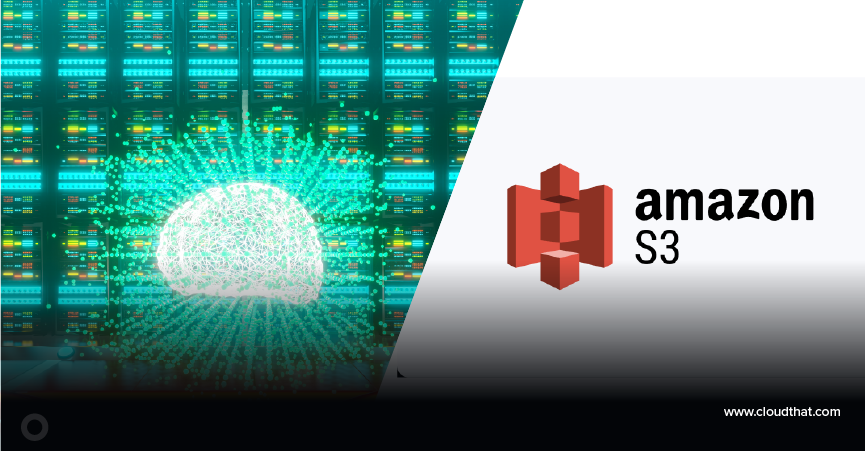|
Voiced by Amazon Polly |
Introduction
In today’s data-driven landscape, organizations rely on seamless, automated, and reliable data operations to make real-time decisions. As the volume, velocity, and variety of data increase, manual orchestration and monitoring of data workflows become unsustainable. This is where DataOps, the fusion of data engineering, automation, and agile practices, comes into play.
To bring DataOps to life, two modern orchestration frameworks have emerged as prominent: Prefect and Dagster. Both tools simplify the design, scheduling, and observability of complex data workflows, enabling teams to build resilient, maintainable, and automated pipelines with ease.
In this post, we’ll explore how DataOps principles align with workflow automation, compare Prefect and Dagster, and examine how they can transform the way teams manage their data infrastructure.
Pioneers in Cloud Consulting & Migration Services
- Reduced infrastructural costs
- Accelerated application deployment
Understanding DataOps and Why Automation Matters
DataOps is often described as the DevOps for data. It aims to streamline data pipeline development, deployment, and monitoring, ensuring faster delivery, improved data quality, and enhanced collaboration between teams.
At its core, DataOps emphasizes:
- Automation of repetitive data tasks (ETL, validation, deployment).
- Observability, understanding where and why data workflows fail.
- Versioning and reproducibility, ensuring consistent results across environments.
Prefect: “The Orchestrator for the Modern Data Stack”
Prefect was designed with a simple philosophy: “Don’t write workflows, write code — Prefect will take care of orchestration.”
It provides a Python-native framework for defining, scheduling, and monitoring data flows without locking users into rigid Directed Acyclic Graph (DAG) structures.
Key Features of Prefect
- Flows and Tasks: In Prefect, workflows are defined as Flows made up of smaller Tasks. Each task is a Python function, and Prefect handles orchestration, retries, and dependency resolution.
- Dynamic Workflow Building: Unlike Airflow, Prefect workflows can be dynamically generated, meaning conditional logic and loops can exist within the flow definition itself.
- Error Handling and Retry Logic: Prefect makes retry policies and failure notifications for first-class citizens. You can define task-level retries and triggers with minimal boilerplate.
- Observability with Prefect UI/Cloud: Prefect Cloud or Prefect Orion (the open-source backend) provides dashboards for real-time monitoring, logs, and alerts.
- Hybrid Execution Model: Prefect’s hybrid architecture separates the orchestration layer from execution environments, enabling secure runs on both local and cloud infrastructure.
Example
|
1 2 3 4 5 6 7 8 9 10 11 12 13 14 15 16 17 18 19 20 21 22 |
from prefect import flow, task @task(retries=2) def extract_data(): return {"data": [1, 2, 3]} @task def transform_data(data): return [x * 2 for x in data["data"]] @task def load_data(transformed): print("Loading data:", transformed) @flow def etl_flow(): raw = extract_data() transformed = transform_data(raw) load_data(transformed) if __name__ == "__main__": etl_flow() |
This small example shows how Prefect makes defining and managing flows intuitive, using only Python decorators.
Dagster: “The Data Orchestrator with Software Engineering Discipline”
While Prefect emphasizes simplicity, Dagster takes a data-centric and type-safe approach to orchestration. It treats data assets, dependencies, and lineage as core concepts, bringing software engineering rigor to data workflows.
Key Features of Dagster
- Assets and Ops: Dagster introduces Ops (operations) and Assets (data products). Each asset is aware of its origin, dependencies, and how it transforms data, enabling data lineage and improved reproducibility.
- Type System and Metadata: Dagster’s strong type system helps validate inputs and outputs at runtime, catching errors early. It also lets you attach metadata for tracking and observability.
- Declarative Scheduling: Dagster supports powerful scheduling, sensors, and partitioning, enabling fine-grained control over data refreshes.
- Web UI (Dagit): Dagit, Dagster’s built-in UI, visualizes asset dependencies, execution logs, and materialization status. It’s like having a data catalog and workflow monitor in one interface.
- Integration-Friendly: Dagster integrates seamlessly with Snowflake, dbt, Spark, and other components of the modern data stack.
Example
|
1 2 3 4 5 6 7 8 9 10 11 12 13 |
from dagster import asset @asset def raw_data(): return [1, 2, 3] @asset def transformed_data(raw_data): return [x * 2 for x in raw_data] @asset def load_data(transformed_data): print("Loading data:", transformed_data) |
Here, each function represents a distinct asset with defined dependencies. Dagster automatically infers the execution order and tracks lineage.
Automating DataOps Workflows in Practice
Integrating Prefect or Dagster into a DataOps workflow can automate and standardize critical tasks such as:
- ETL/ELT Pipelines: Automate ingestion, transformation, and loading of data across systems like Amazon S3, Snowflake, and BigQuery.
- Data Quality Checks: Schedule validations using tools like Great Expectations or custom logic integrated as Prefect tasks or Dagster assets.
- CI/CD for Data: Combine Prefect/Dagster with GitHub Actions or Jenkins to automatically deploy workflows upon merge or commit.
- Alerting and Monitoring: Set up automated alerts for task failures, performance degradation, or data drift.
Conclusion
Automating DataOps workflows with Prefect and Dagster is not just about orchestration, it’s about enabling trust, speed, and collaboration in modern data ecosystems.
Drop a query if you have any questions regarding Prefect or Dagster and we will get back to you quickly.
Experience Effortless Cloud Migration with Our Expert Solutions
- Stronger security
- Accessible backup
- Reduced expenses
About CloudThat
CloudThat is an award-winning company and the first in India to offer cloud training and consulting services worldwide. As a Microsoft Solutions Partner, AWS Advanced Tier Training Partner, and Google Cloud Platform Partner, CloudThat has empowered over 850,000 professionals through 600+ cloud certifications winning global recognition for its training excellence including 20 MCT Trainers in Microsoft’s Global Top 100 and an impressive 12 awards in the last 8 years. CloudThat specializes in Cloud Migration, Data Platforms, DevOps, IoT, and cutting-edge technologies like Gen AI & AI/ML. It has delivered over 500 consulting projects for 250+ organizations in 30+ countries as it continues to empower professionals and enterprises to thrive in the digital-first world.
FAQs
1. How do Prefect and Dagster fit into a DataOps strategy?
ANS: – Prefect and Dagster are modern workflow orchestration tools that automate, schedule, and monitor data pipelines. They enable DataOps by providing observability, error handling, and version control, thereby transforming manual data flows into automated and maintainable processes.
2. What are the main differences between Prefect and Dagster?
ANS: – Prefect focuses on simplicity, flexibility, and hybrid execution, whereas Dagster emphasizes data lineage, type safety, and structured data asset management. Prefect is great for lightweight orchestration and quick setup, while Dagster suits teams prioritizing governance, metadata tracking, and complex data relationships.
3. Can Prefect and Dagster replace Apache Airflow?
ANS: – In many modern use cases, yes. Both Prefect and Dagster were built as next-generation alternatives to Airflow. They offer cleaner APIs, better developer experience, dynamic pipeline creation, and cloud-native observability. However, organizations with significant Airflow investments may adopt them gradually alongside their existing setups.

WRITTEN BY Hitesh Verma
Hitesh works as a Senior Research Associate – Data & AI/ML at CloudThat, focusing on developing scalable machine learning solutions and AI-driven analytics. He works on end-to-end ML systems, from data engineering to model deployment, using cloud-native tools. Hitesh is passionate about applying advanced AI research to solve real-world business problems.


 Login
Login


 October 28, 2025
October 28, 2025 PREV
PREV










Comments